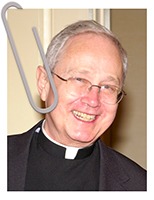Charles Dickens – Artists as a Voice of the Poor
Charles Dickens’ “A Christmas Carol?” Who hasn’t read it, or heard it or seen it on stage or screen? It has inspired many people to look at their lives through the lens of their past, future, and present. The short story, written in 1843, contained a big message that helped the poor. With a beautifully crafted story, he created an awareness of some of the roots and long-range effects of poverty.
The painter Van Gogh admired the social conscience of Charles Dickens and of British artists who depicted workhouses and the underside of Victorian life. In his book “How the Other Half Lives” (1890), Jacob Riis, American newspaper reporter, social reformer, and photographer shocked the conscience of his readers with graphic records of slum conditions in New York City.
Fifty years later author John Steinbeck’s classic novel “The Grapes of Wrath” raised awareness of the injustice faced by many migrants on the road during the Great Depression. It became the impetus for political movements. Steinbeck had succeeded in changing the perception of poverty.
Artists through the centuries have challenged superficial visions of poverty and inspired dedication to direct services improving the condition of the poor.
Vincent as a Voice of the poor
St. Vincent de Paul was himself shaped by the story of the Good News as told by the inspired writers, especially Luke and Matthew. The story in Luke chapter 4 reveals of Jesus’ mission statement – Bring Good News to the Poor. It also gave Vincent and his family the formulation of their mission statement. Another inspired writer, Matthew tells the story of the roots of this mission – God’s identification with the poor. “Whatsoever you do to the least of my brothers and sister you do for me.” MT 24
But Vincent in his own way used media to change the perception of those in poverty and inspired many to collaborate with him in serving the least among his generation. Vincent was originally reluctant to use the media of his day, letters, to tell the story of the sufferings of the poor and how his collaborators worked tirelessly to bring spiritual and physical good news. He first thought telling these stories was incompatible with humble service.
Then one day he realized that in telling the story of the poor he gave the voice to their sufferings. Telling the stories of what his collaborators were doing inspired others to join in these efforts. He then began to reproduce and circulate the letters his missioners wrote from the field. This, in turn, led the upper classes to offer much-needed material support. As understanding of the need spread through these letters, it inspired others to join cause with him.
Fast forward to the 1949 Academy Award-winning motion picture “Monsieur Vincent” who centuries earlier had been officially declared “Father of the Poor.”. The film won universal acclaim for its effective telling of the story of St. Vincent and his beloved poor. Generations since then have been inspired to pick up the mantle of Vincent.
Contemporary artists serving as the Voice of the Poor
All of the above came together for me when I had the opportunity to sit in at a session of a task force of 18 members of the Vincentian family gathered from four continents. They were reviewing some of the videos shown at the recently completed film festival “Finding Vince.” Convened under the auspices of the International Vincentian Family Office, their task was to explore the dimensions and possible best practices in inspiring a culture of vocations by changing our vision of poverty and inspiring direct service to the poor. Reflecting on the videos I realized the recent film festival “Finding Vince” stands squarely in a long tradition fo changing consciousness. Artists helping us to see dimensions poverty we do not see.
It was much more than finding a successor to the film Monsieur Vincent. The stated aim of the festival was to stimulate artists to develop media that change our vision of poverty and inspire direct service to the poor. The festival stood squarely in the tradition of artists, especially young artists, creatively presenting the rawness of poverty today and inviting a response.
As a by-product, I understood more clearly the efforts of a current initiative of the Eastern Province to explore creative uses of media in its mission of following Christ the evangelized of the poor.
If you would like to contribute your time, talent or treasure to this initiatives please contact us.


Rom 16, 13 reads: "Greet Rufus, chosen in the Lord; and greet his mother—a mother to me also." If this…
Have a blessed Holy Week!
I have never thought about the people that were named in the Gospels. I would agree that they may be…
Generally, I love the laconic nature of Mark's Gospel. The Passion narrative is very compelling in its starkness, with one…
Father John, Blessings to you as you step cautiously down that new path. Grace and Peace be with you!